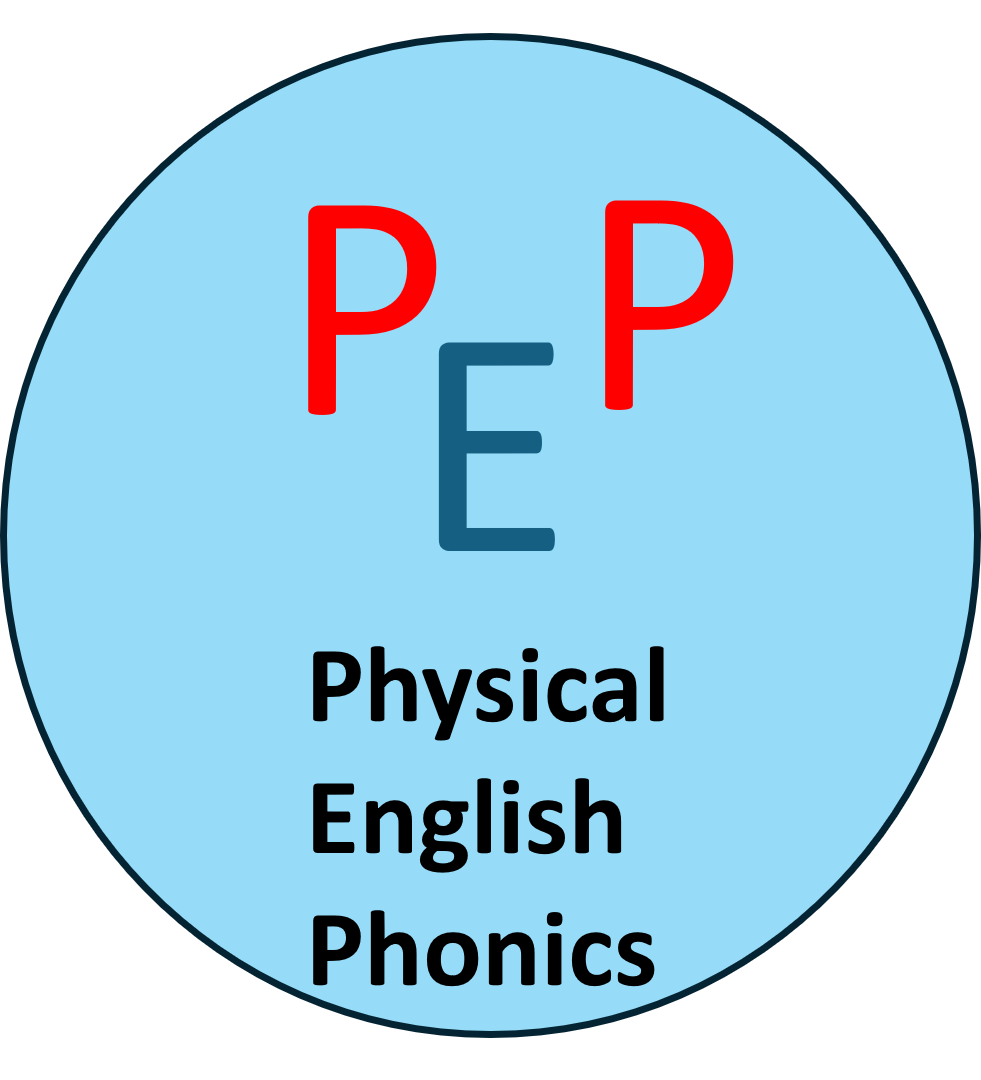Phonics
Click on the language you are interested in: French Phonics - Spanish Phonics - German Phonics - English Phonics
French Phonics
 Sue Cave is the co-author of Physical French Phonics. It is a step by step guide on how to embed phonics in language learning with accompanying classroom activities. It is suitable both for up-skilling adults and for use in the classroom with any age group. 26 key French sounds have been identified and are represented by memorable cartoon pictures which link them to an action. There are video recordings of native speakers performing the accompanying actions for the sounds. In addition, there are photocopiable resources to practise linking the sounds to letters; flashcards; activity cards, interactive whiteboard files to create your own resources and a wall frieze. Cave Languages scheme of work resources include this method of teaching phonics.
Sue Cave is the co-author of Physical French Phonics. It is a step by step guide on how to embed phonics in language learning with accompanying classroom activities. It is suitable both for up-skilling adults and for use in the classroom with any age group. 26 key French sounds have been identified and are represented by memorable cartoon pictures which link them to an action. There are video recordings of native speakers performing the accompanying actions for the sounds. In addition, there are photocopiable resources to practise linking the sounds to letters; flashcards; activity cards, interactive whiteboard files to create your own resources and a wall frieze. Cave Languages scheme of work resources include this method of teaching phonics.
- For more information: www.physicalfrenchphonics.co.uk
- For videos on YouTube: Physical French Phonics YouTube Channel
- To purchase the resource: www.brilliantpublications.co.uk
- Visit the Physical French Phonics Facebook page
- See posts on Instagram @physicalfrenchphonics
- On Twitter @SueCave4
- On Bluesky @frenchphonics
Physical French Phonics was a winner of the European Language Label Award 2012.
If you have a copy of the first edition of Physical French Phonics the Flashplayer within the files will no longer be supported from the end of 2020 or if you have a copy of the second or third edition but no longer have access to a CD or USB drive - please contact info@brilliantpublications.co.uk and tell them where and when you purchased your copy and they will send you the HTML files. The fourth edition is now available and on purchasing the resource you will be given a password to download the interactive files.
Free Physical French Phonics Resources
If you have a copy of Physical French Phonics, you can have access to a password area on the Cave Languages website to download free Smart Notebook classroom resources and accompanying lesson plans to introduce the key 26 sounds; a wall frieze; phonics mat; interactive games and assessment activities. Just send Sue Cave a photo of your copy.More information here. Cave Languages Schemes of Work
Physical French Phonics YouTube
Here are links to the Physical French Phonics YouTube channel with various webinar presentations on embedding phonics in primary schemes of work, creating resources and using the resource in secondary schools.
Teaching French Phonics
Find below documents: to explain a 7 step process for teaching phonics; a mapping document for inclusion of phonics in a scheme of work; 5 steps for pronouncing unfamiliar words in French; common words which contain all the key phonemes.
7 step processPDF file, size: 39.8KB5 steps for pronouncing unfamiliar words in FrenchPDF file, size: 213.5KBMapping French Phonics in a Scheme of WorkMicrosoft Excel file, size: 17.5KBKey French phonemes in common wordsMicrosoft Excel file, size: 11.7KBSpanish Phonics

Sue Cave is a co-author of Physical Spanish Phonics based on the successful French version. It is a step by step guide on how to embed phonics in language learning with accompanying classroom activities. It is suitable both for up-skilling adults and for use in the classroom with any age group. 20 key Spanish sounds have been identified and are represented by memorable cartoon pictures which link them to an action. There are video recordings of native speakers performing the accompanying actions for the sounds. In addition, there are photocopiable resources to practise linking the sounds to letters; flashcards; activity cards, interactive whiteboard files to create your own resources and a wall frieze.
- To purchase the resource: www.brilliantpublications.co.uk
Teaching Spanish Phonics
Find below a document which lists all the key Spanish phonics and can be used to map phonics in a Spanish scheme of work as well as a list of common Spanish words which contain all the key phonemes.
Mapping Spanish Phonics in a Scheme of WorkMicrosoft Excel file, size: 17.2KBKey Spanish phonemes in common wordsMicrosoft Excel file, size: 11.5KBGerman Phonics

Teaching German Phonics
Find below a document which lists all the key German phonics and can be used to map phonics in a German scheme of work as well as a list of common German words which contain all the key phonemes.
Mapping German Phonics in a Scheme of WorkMicrosoft Excel file, size: 18.2KBKey German phonemes in common wordsMicrosoft Excel file, size: 12.1KBEnglish Phonics

Sue Cave has designed a kinaesthetic and visual method for helping learners of British English, as an additional language, remember how to pronounce the 44 sounds of English (RP) and decode the International Phonetic Alphabet (IPA) symbols for them. For each sound there is a memorable action and image which represents it.
Find below a document which lists all the 44 English phonemes and corresponding graphemes and can be used to map phonics in an EAL scheme of work as well as a list of common words which contain all the phonemes.
Mapping English Phonics in a Scheme of WorkMicrosoft Excel file, size: 11.4KBEnglish phonemes in common wordsMicrosoft Excel file, size: 12.3KBFollow the link below to the 'Physical English Phonics' YouTube channel where you will find a video for each of the vowels, diphthongs and consonants as well as key words which include these sounds.
Visit the Physical English Phonics YouTube Channel
See posts on Instagram PhysicalEnglishPhonics1
Teaching Phonics
Here are presentations delivered by Sue Cave on teaching phonics.
Embedding phonics in language learningPDF file, size: 1.8MBTop 10 Tips for Teaching PhonicsPDF file, size: 4.3MBPhonics in progressPDF file, size: 5.2MBFrench Pronunciation Upskilling
Cave Languages offers a unique training course for primary teachers who would like to improve their French pronunciation and become more confident about it using the Physical French Phonics method. It consists of two video training sessions, the first one is 1 hour 30 minutes in length and the second one lasts for one hour. Find out more here: Cave Languages French Upskilling VideosPDF file, size: 167KB Book access to videos
